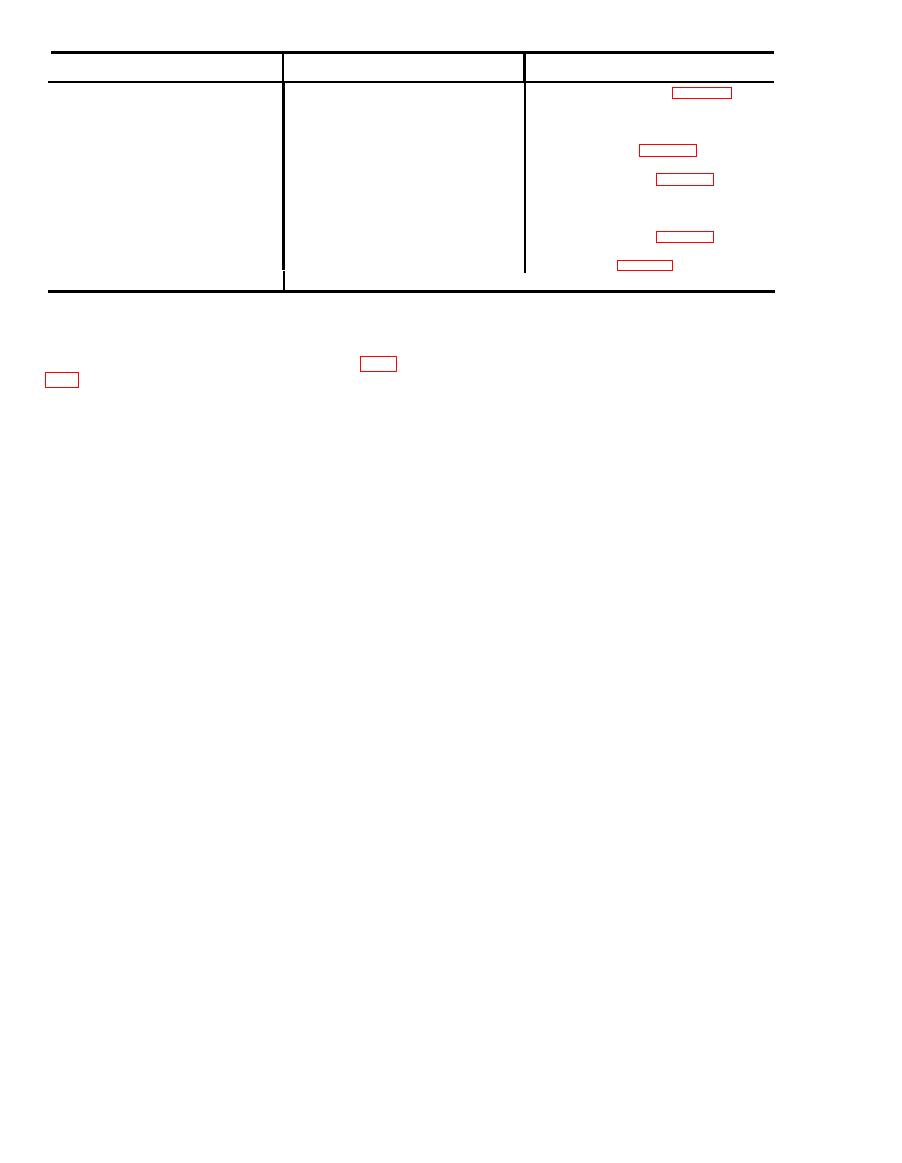
Table 3-2. Troubleshooting
Malfunction
Probable cause
Corrective action
a.
a.
Fuel line clogged.
Clean out fuel line (para 3-24).
1. Burner does not fire
Fill fuel tank.
b.
b.
Fuel tank empty.
Open drip valve.
c.
c.
Drip valve closed.
Remove and clean burner cap and
d.
d.
Burner clogged.
burner body (para 3-25).
a. Remove and clean burner cap and
a. Excessive carbon on burner.
2. Incomplete combustion
burner body (para 3-25).
b. Procure clean fuel. Flush fuel lines
b. Dirt in fuel.
with clean fuel.
a. Remove and clean burner cap and
a. Excessive carbon on burner.
3. Heater does not heat properly
burner body (para 3-25).
b. Remove stack, disassemble, and
b. Accumulation of soot in stack.
clean (para 3-21).
Heater too hot.
Reduce amount of fuel fed to fire.
4. Heater body warped.
with waterproof kraft wrapping paper (UU-P-27)
b. Inspection. Examine the item for any unusual
secured in place with tape.
conditions such as damage or missing components.
g. Marking. Mark in accordance with MIL-STD-
Inspect the heater in accordance with steps outlined
129.
in Quarterly Preventive Maintenance Services (para
rective action taken will be recorded on DA Form
2404 (TM 38-750).
c. Cleaning and Dying. Cleaning and drying by an
a. General. This paragraph provides instructions
approved technique is the first essential procedure
for preparation of the heater for limited storage, not
in any effective preservation process. Approved
to exceed six months.
methods of cleaning and drying, types of preserva-
b. Inspection and Maintenance of Equipment in
tives, and methods of application are described in
Storage. When heaters have been placed in limited
T 38-230.
storage, all scheduled preventive maintenance ser-
d. Painting. Paint surfaces where the paint has
vices including inspection shall be suspended and
been removed or damaged. Refer to TM 9-213 for
preventive maintenance inspection shall be per-
detailed cleaning and painting instruction.
formed as specified herein. Perform quarterly pre-
ventive maintenance services when the heater is
e. Depreservation Guide. Record depreservation
instructions on DA Form 2258 or DD Form 1397 as
initially placed in limited storage and every 90 days
applicable.
thereafter. Record all deficiencies and shortcomings,
together with corrective action taken, on DA Form
f. Sealing of Openings. Openings that will permit
2404. Required maintenance will be performed
the direct entry of water into interior of the heater
shall be sealed with pressure-sensitive tape conform-
promptly to insure that the heater is mechanically
ing to Specification PPP-T-60, Class 1, or covered
sound and ready for immediate use.
Section XII. DEMOLITION OF MATERIAL TO PREVENT ENEMY USE
3-33. General
(1) Exhaust pipe sections.
When capture or abandonment of the heater to an
(2) Drip valve.
enemy is imminent, the responsible unit commander
(3) Burner
must make the decision either to destroy the equip-
(4) Heater body.
ment or render it inoperative. Based on this deci-
(5) Grate
sion, orders are issued which cover the desired ex-
(6) Fuel can and hose.
tent of destruction. Whatever method of demolition is
b. Other Demolition Methods.
employed, it is essential to destroy the same vital
(1) Scattering and concealment. Remove all
parts of all heaters and all corresponding repair
easily accessible components and scatter them
parts.
through dense foliage, bury them in dirt, or sub-
merge them in a lake, stream, or other body of water.
Inoperative
(2) Submersion. Totally submerge the heater in
a body of water to provide water damage and con-
a. Demolition by Mechanical Means. Use sledge
cealment. Salt water will damage metal parts more
hammers, crowbars, picks, axes, or any other heavy
than fresh water.
tool which may be available to destroy the following:

